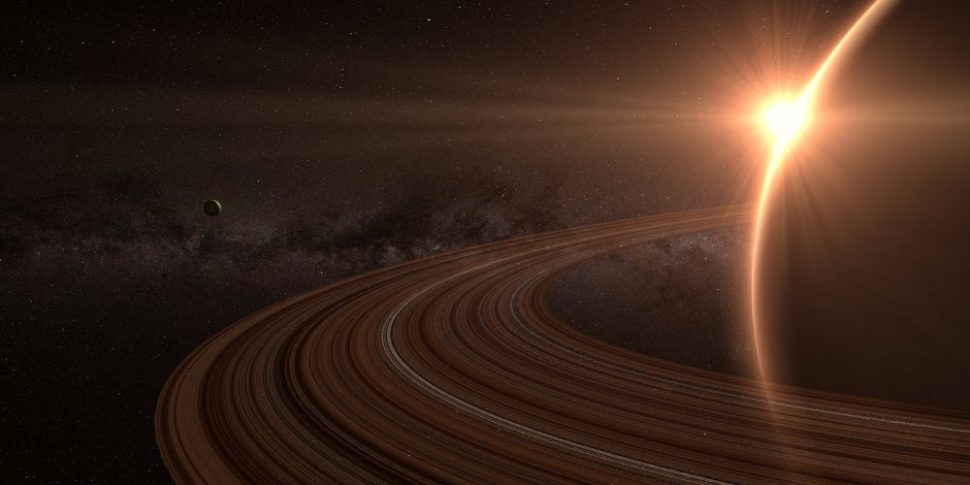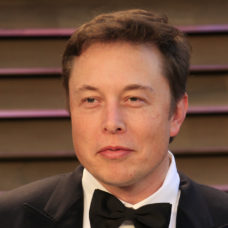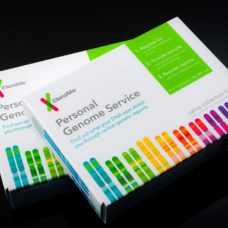Here’s a fun list of 10 of the most promising scientific accomplishments that we witnessed during the past year.
All year long in 2017, scientists in numerous fields tested their knowledge to acquire new insights. It may seem like the last 100 years of scientific advancement has slowed down. However, 2017 pushed the boundaries of our understanding of life and the world around us.
Read More: How are Art and Science Related and Where do They Intersect
From great discoveries in astronomy to major breakthroughs in medical research, the year 2017 brought with it a bunch scientific “firsts”.
In #2017 we launched recycled rockets, grew animals in artificial wombs, and modified our genes.Click To TweetIn order to help you catch up, each scientific achievement listed below comes from the last 13 months.
The Top 10 Scientific Achievements of 2017:
1. Homo Sapiens Appeared Earlier, and in a “Bigger” Garden of Eden
We used to believe that the human race had existed for about 200,000 years, but it seems that we’ve been roaming the face of Earth for longer.
An international team of paleontologists has unearthed the oldest traces of our own species known to date.
Newly-found fossil evidence suggests that Homo sapiens are some 115,000 years older than we thought.
115,000 year-old Homo sapien remains found in MoroccoClick To TweetIn a study published in the journal Nature last June, the team reported the discovery of the 315,000 fossil remains of Homo sapiens in Morocco.
Researchers also said that their findings challenge the commonly accepted idea that modern humans originated in sub-Saharan Africa.
“Until now, the common wisdom was that our species emerged probably rather quickly somewhere in a ‘Garden of Eden’ that was located most likely in sub-Saharan Africa,” said Jean-Jacques Hublin, director at the Max Planck Institute for Evolutionary Anthropology. “Now, I would say the Garden of Eden in Africa is probably Africa — and it’s a big, big garden.”
2. Striking Neutron-Star Gold
Einstein predicted the existence of gravitational waves a century ago. However, it was only in 2015 that astrophysicists finally observed this cosmic phenomenon and confirmed Einstein’s predictions.
In fact, this discovery earned them the 2017 Nobel Prize in Physics.
Then, in 2017, a multi-institutional research effort led scientists to the first-ever observation of two neutron stars merging.
Scientists theorize and have observed iron and other lighter elements being created by nuclear fusion during supernovas. Until 2017, however, we hadn’t observed heavy elements in the light spectrum given off by any cosmic event.
Thanks to this observation in August of last year, researchers found evidence of heavy elements being created. Scientists from LIGO and VIRGO found additional evidence of Einstein’s gravitational waves.
At the same time, multiple telescopes around the world observed the light given off by the neutron star collision. In it, they found colors given off by heavier elements in the light spectrum. This appears to solve the mystery of the origin of heavy elements.
Just one second after the collision, the neutron stars allegedly forged hundreds of Earth masses’ worth of gold, platinum, silver and other elements heavier than iron.
3. Alien Solar System With Seven Earth-Like Exoplanets
The year 2017 was an exceptional year for exoplanets. Interestingly, AI and even citizen scientists played a significant part in the search for alien worlds.
In February 2017, an international team of astronomers revealed the presence of a batch of seven earth-sized planets orbiting a red dwarf star.
The Trappist-1 system, located 40 light-years away in the Aquarius constellation, continued fueling the hopes about the possibility of alien life ever since.
Scientists analyzed data from the Spitzer and Kepler telescopes to reveal new clues about the Trappist-1 solar system.
The findings of the new study suggest that all the seven planets of Trappist-1 are largely rocky and could have atmospheres similar to that of rocky planets.
That doesn’t guarantee their habitability just yet. However, some of them also appear to have significant quantities (up to 5%) of water. For comparison, water makes up only 0.02% of Earth’s mass.
4. Remember Cassini!
The Cassini probe (1997-2017) made its grand finale on September 15th, 2017.
Even if Cassini’s mission, which was a complete success, has ended, its legacy lives on.
According to NASA, the Cassini spacecraft made a scheduled lethal dive into Saturn’s atmosphere after 13 years of collecting data about the planet and its moons. Cassini had to make a 7-year journey to reach Saturn.

Cassini turned its camera toward Saturn’s night side for one last image, capturing a monochrome view of the spot in Saturn atmosphere that it would plunge into hours later.
5. SpaceX’s First Reused Rocket
In 2017, SpaceX made at least one first in space flight history with its launch of a recycled rocket booster.
In March 2017, SpaceX launched the same Falcon 9 rocket booster that carried a payload to the ISS the previous year. Then, the first-stage booster landed back again on a drone ship successfully.
As 2017 was coming to a close, on Dec. 15, SpaceX launched a Falcon 9 rocket and a Dragon capsule that have both flown before, in yet another milestone for cheaper space flights.
Just few days ago (Feb. 6th), Elon Musk has crossed off another item on his space to-do list, with the successful launch of the Falcon Heavy rocket.
6. Quantum Entanglement at Work
Based on the principle of quantum entanglement, scientists in China have managed to create a teleportation machine. Well, sort of.
Researchers at the University of Science and Technology of China said they transmitted an entangled photon into space over a distance of about 1,500km.
This marks a big development for harnessing of quantum mechanics as a whole. It also shows the potential of using quantum mechanis as a fast, efficient, and secure communication method.
7. The Lamb From the Artificial Womb
Thanks to an artificial womb developed at the Children’s Hospital of Philadelphia, babies born severely prematurely may soon find a better chance of living healthy.
CHOP researchers wanted to look at premature babies as fetuses (instead of as newborn babies) who need to complete gestation in an extra-uterine device.
Successfully tested with fetal lambs, this womb-like container is the first ectogenesis device–a classic trope in Sci-Fi literature.
8. Gene Therapy Recognition
It was a big year for gene therapy. For starters, the U.S. Food and Drug Administration approved two CAR T-Cell treatments.
Last August, Novartis announced that FDA had approved its personalized cell therapy (Kymriah). This paves the way for a gene therapy against certain types of cancer in the United States.
Then, just a couple of weeks later, the FDA granted a second such approval for Yescarta, a CAR T-Cell therapy.
YescartaTM is for patients with non-Hodgkins lymphoma who have failed at least two other cancer treatments.
As you may have guessed, in terms of affordability, both therapies come with a hefty price tag. At $373,000, Yescarta is still over $100,000 cheaper than Kymriah. However, unlike the former, Kymriah is paid for only if the patient responds to treatment during the first month.
Yet, as new players enter the scene and gene therapies become more common, prices would decrease over time.
9. CRISPR-Cas9 Gene-Edited Viable Human Embryos
CRISPR-Cas9 is also a gene therapy, but it earned a spot on its own on our list because of its unique DNA-editing approach and applications.
Read More: The Latest Guide to Understanding CRISPR-Cas9
After years of wielding the CRISPR DNA scissors, scientists have finally used them on viable human embryos.
Well, this is a first and a step closer toward clinical applications of gene-editing therapy.
Mildred Solomon, Hastings Center President, said in a tweet:
10. Breakthroughs in HIV Treatment
From a significant reduction in HIV viral load to potential vaccines, 2017 brought many promising news for millions of patients suffering from HIV.
As part of the 9th IAS Conference on HIV Science (IAS 2017), several scientific breakthroughs and initiatives in the fight against HIV and AIDS were discussed.
ABX464 is a drug, from biotech company Abivax, that has shown its ability to reduce HIV viral load by 40% on average.
Abivax says it’s working to achieve what it calls a “functional cure” in HIV patients, in other words, reducing the viral load to a point where the disease stops progressing.
In a similar note, a new study revealed that the undetectability of HIV viral load means it’s untransmittable.



















Comments (0)
Most Recent